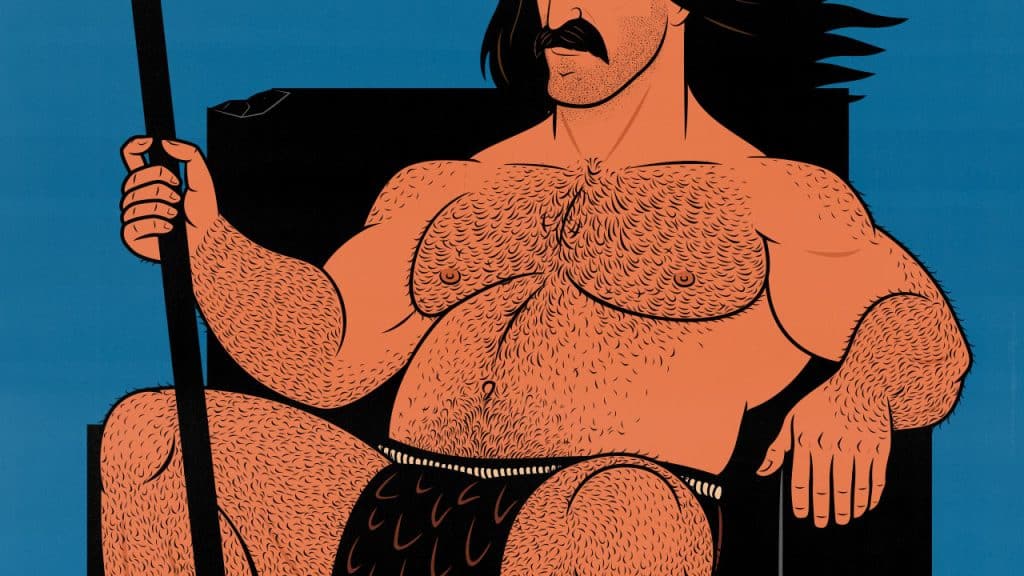
A Beginner’s Guide to Bulking & Cutting
Bulking and cutting are key terms in the muscle-building industry. Bulking is when you gain weight to facilitate muscle growth. Cutting is when you lose weight to burn fat. Some people do them in sequence, bulking, then cutting, and then bulking again.
Bulking is controversial, and understandably so. The average person is already overweight. They don’t need to gain even more weight. However, if you’re skinny, thin, lean, or in good shape, bulking is by far the most effective way to gain muscle and strength.
Cutting is less controversial. Most people have extra fat, and cutting is the best way to burn it. It’s a great first step for the average beginner. However, many seasoned lifters get distracted by trying to maintain overly lean body-fat percentages.
The main concern is that you could get stuck in an endless cycle of bulking and cutting seasons, bulking until you become overweight, cutting until you wither away, and then going back to bulking. This is especially worrisome for “skinny-fat” people who already feel too thin and fat.
We have solutions for all these issues.
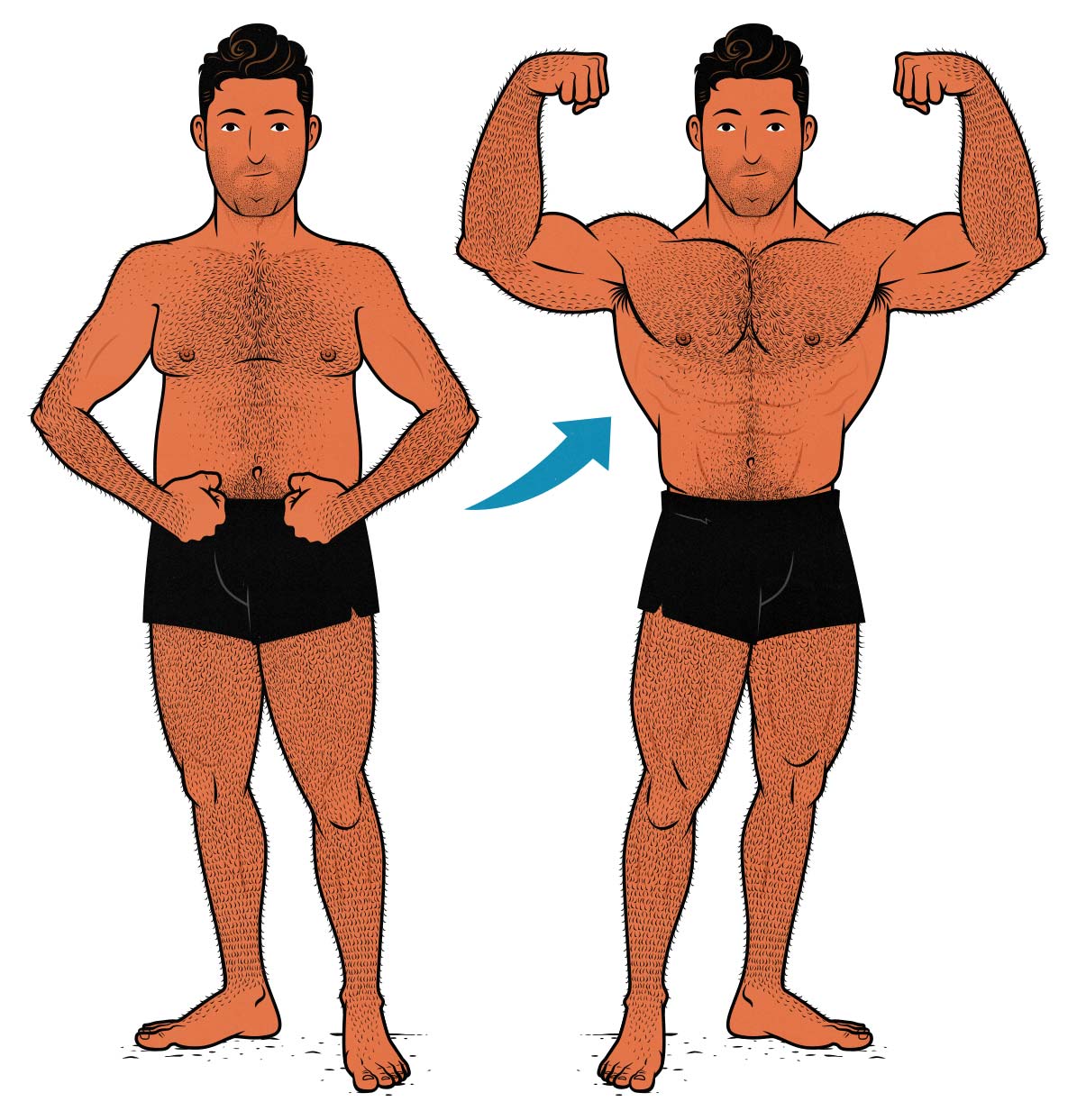
A Brief Overview of Bulking
What is Bulking?
Bulking is when you gain weight to facilitate muscle growth. If you want to gain weight, this is the leanest way to do it. The only other option is to gain weight without emphasizing muscle, which yields mostly fat.
There are many different types of bulking. You could bulk with a small calorie surplus to minimize fat gain (lean bulking), or you could eat in a huge surplus to maximize muscle growth (aggressive bulking). You could get into that calorie surplus by eating more junk food (dirty bulking), or you could avoid junk food entirely (clean bulking).
Most people bulk the classic way. They eat in a moderate calorie surplus, gaining 0.5–1 pound per week. They prioritize nutritious foods but aren’t afraid of using sauces or eating desserts.
How Do You Bulk?
At its core, bulking is when you train and eat for muscle growth. That gives us two foundational tenets:
- Follow a hypertrophy training program: Hypertrophy training is a type of resistance training designed for building muscle. It’s often confused with “strength training,” which is actually quite different, especially within the lifting subculture. A good default is to start with full-body workouts, emphasize compound lifts, and do 3–4 sets of 6–20 reps per exercise.
- Eat a bulking diet: You absolutely have to eat enough food to gain weight, but it also helps to eat a nutritious and balanced diet. This can be especially hard for so-called hardgainers (like me). Some people need to eat a tremendous amount of food to gain weight.
You can delve much deeper into the art of bulking. Think of this article as a small temple sitting atop an endless network of cave systems. The deeper you go, the darker it gets, but the greater the treasures you will unearth.
Who Should Bulk
If you already have an abundance of body fat, you don’t need to get extra energy from your diet. You can build muscle with the extra energy in your gut. You can build muscle without bulking. Plus, if you’re already overweight, gaining even more weight might not be good for you.
Bulking is for underweight, thin, and lean people who want to get bigger, stronger, and more muscular. If your goal weight is higher than your current weight, you have a bulk in your future. You can take it slowly or go after it aggressively, but you’ll need to gain weight, and bulking is the best way to do that.
What Comes After Bulking?
Most people assume that cutting comes after bulking. That’s an option, but it isn’t the only option, and it may not even be the best one.
First of all, if you don’t gain much fat, there’s no need to cut. For example, here’s a photo of GK after he finished his first bulk. It would be ridiculous for him to start cutting. Instead, he should keep living a healthy lifestyle and keep some resistance training in his exercise routine. He can also embark on another bulk whenever he wants.
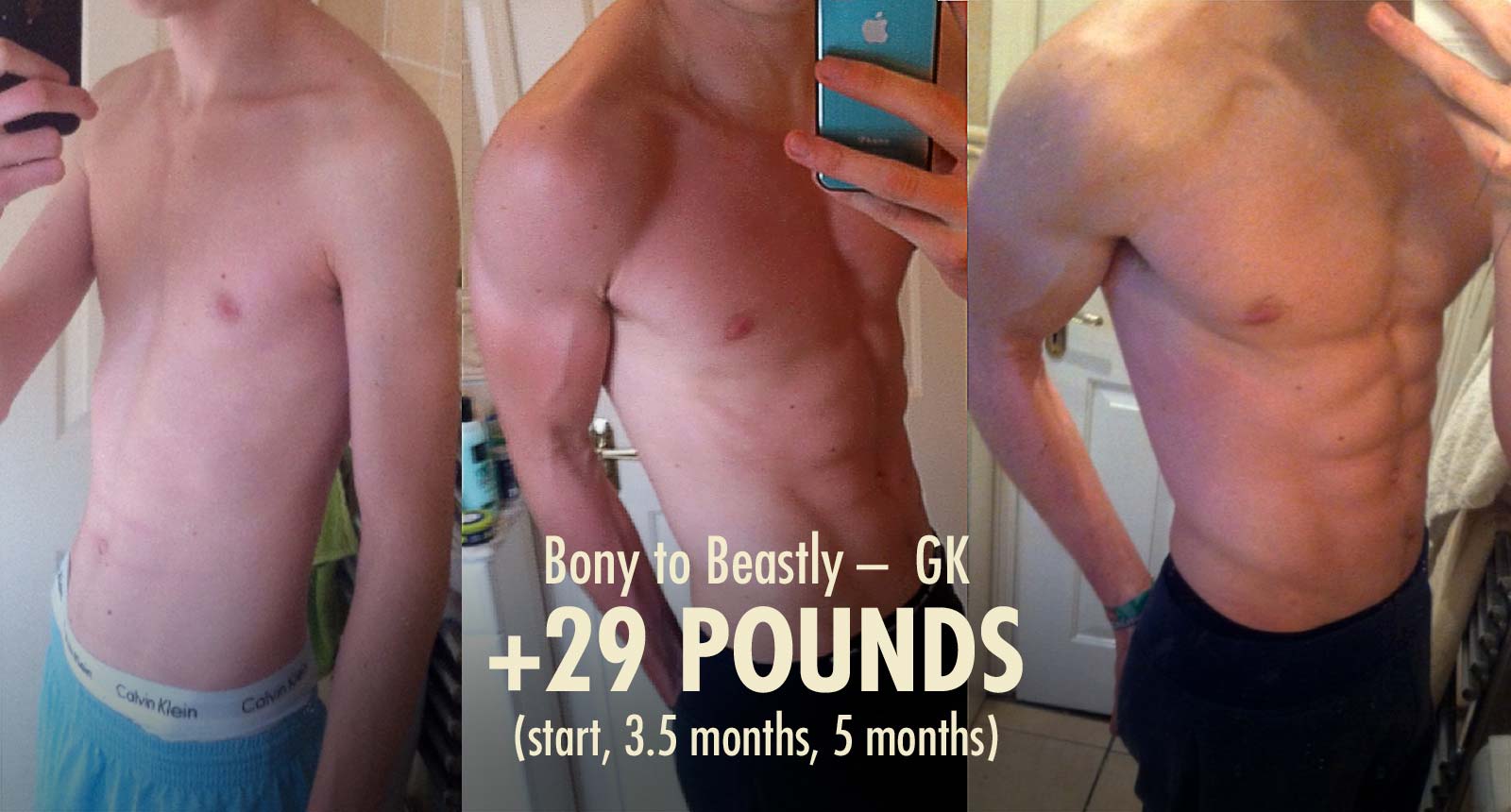
If you do gain too much body fat, you may find that it disappears by itself. Whenever I finish a bulk, my weight drifts down a bit. I keep lifting and eating well, so there’s no risk of losing any muscle mass. We call this Reverse Bulking. It works incredibly well for naturally thin people.
Or, if you want to make a dedicated effort to get leaner, you could cut. Let’s talk about how to do that.
An Introduction to Cutting
What is Cutting?
Cutting is when you lose weight to burn fat. If you want to get leaner, this is the best way to do it. The only other option is to lose weight without emphasizing fat loss, which inevitably results in muscle loss.
Just like with bulking, you can cut in different ways and at different speeds. You could get into a calorie deficit by skipping breakfast (intermittent fasting), cutting out carbs (keto), cutting out junk food, doing more exercise, tracking calories, or simply eating less food.

How to Cut
The goal of cutting is to lose weight while preserving muscle mass. That gives us two core cutting tenets:
- Follow a hypertrophy training program: Just like when you’re bulking, you need to stimulate muscle growth. That’s how you signal to your body that your muscle is needed and cannot be burned for energy. That way, you’ll burn pure fat instead.
- Eat a cutting diet: You need to lose weight, which means you need to get into a calorie deficit. You need to keep eating enough protein to support muscle growth, so a good default is to eat less carbs and fat. A good place to start is by cutting back on junk food.
You can cut at any speed, but most people benefit from cutting at a moderate pace, losing about 0.5–2 pounds every week. You can skip breakfast or cut carbs if you want, but a good default is to simply trim some calories out of your diet.
You don’t have to track your calories, but many people find that it helps. Here’s a cutting calorie calculator and our review of the best calorie-tracking app. Alternatively, you could eat similarly sized meals at similar times every day, eating a little bit less whenever your weight loss stalls.
Another trick is to fill yourself up with nutritious, low-calorie foods. Here are some examples:
- If you snack on chips every evening, you could cut those chips out or make some popcorn instead. Popcorn is simply popped corn. It’s high in fibre, rich in micronutrients, and incredibly low in calories (as long as you don’t add fat).
- If you crave something sweet after dinner, you could tough it out or make a Greek yogurt parfait. You’d combine a cup of no-fat Greek yogurt with frozen mixed berries, giving you protein and micronutrients without very many calories.
You can also go for walks. Walking is a healthy way to keep yourself busy while burning calories. You could be at one with nature or work your way through a chapter of an audiobook. It works either way.
Who Should Cut
Cutting is best for people who are overweight. It also works well for anyone who wants to burn fat while keeping their muscle mass. Many beginners can gain a little muscle and strength while cutting.
The main thing to watch out for is cutting when it doesn’t serve your long-term goals.
- If you’re a skinny-fat beginner: You can probably build muscle and lose fat at the same time without needing to bulk or cut. Instead of focusing on calories, you can focus on hypertrophy training, eating a good diet, and living a good lifestyle.
- If you’ve just finished bulking: You might lose any fat you gained without needing to intentionally reduce your calorie intake. We call this Reverse Bulking. It’s a good option to consider.
- If you want to build more muscle: You can build muscle leanly even at higher body-fat percentages. Taking a break to cut might not help in the long run. It’s up to you.
What Comes After Cutting?
When you finish cutting, you can start listening to your appetite again. Keep lifting weights, keep eating a nutritious diet, and keep living a good lifestyle, but let yourself eat a comfortable amount of food again. I would keep eating similar meals at similar times, just increasing the serving sizes such that they’re satisfying again.
You might gain weight, but if you’re following a good hypertrophy training program, that’s okay. Most of the weight you regain will be fluid, food, and muscle. From there, if you keep slowly gaining weight, you may find that you naturally bulk up a bit. That’s great.
You’ll almost certainly reach a point of homeostasis, where you’re eating a pleasant amount of food and your weight is holding steady. That’s the dream. Great job.
If you ever decide that you want to gain more muscle, bulking is the best way to do that.
Bulking & Cutting Results
You don’t need to alternate between periods of bulking and cutting, but you can if you want. Some of the most impressive transformations I’ve seen are from people who bulk fairly aggressively and then cut off any extra fat they gained.
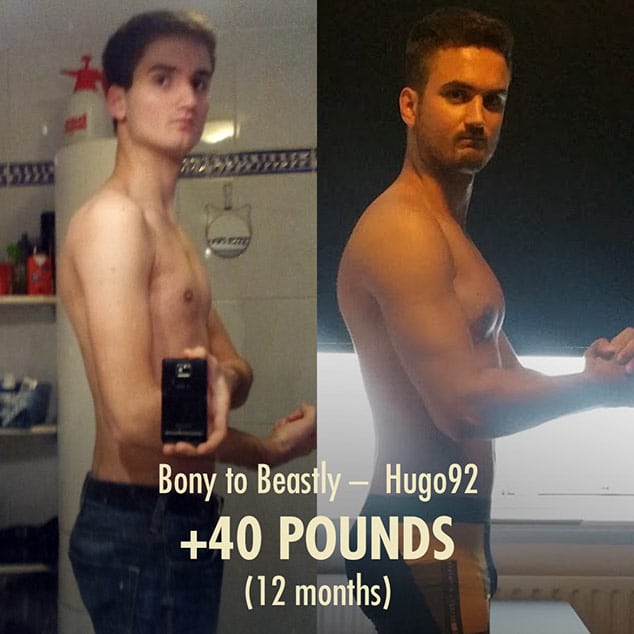
For example, here’s Hugo. He was tired of being so thin, so he bulked up aggressively, then cut off the extra fat he gained. He managed to gain 40 pounds in one year, finishing at the same body-fat percentage as when he started. It’s one of the most remarkable transformations I’ve ever seen.
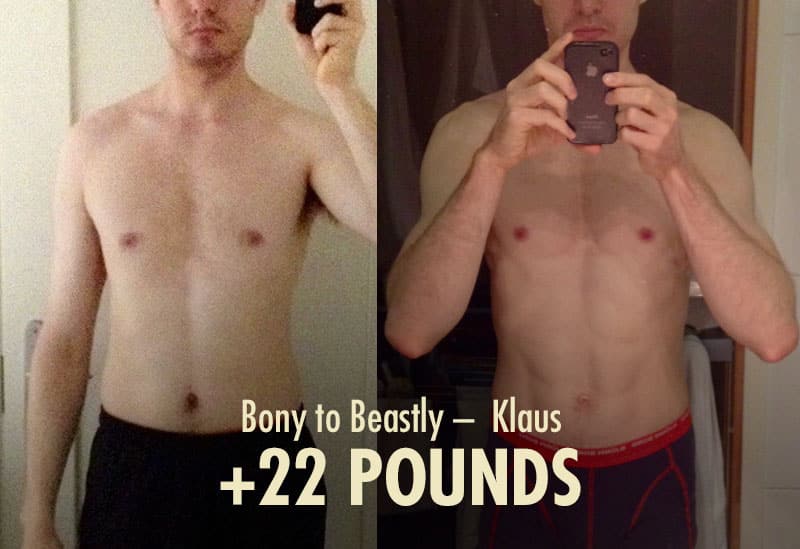
For another example, here’s Klaus. He started off skinny-fat, and he was eager to become both leaner and more muscular. He started by bulking, trying to build muscle as leanly as he could. Then he cut away the extra fat, revealing all the muscle he’d built. He finished in incredible shape.
Conclusion
Bulking and cutting are two of the most powerful methods for improving your body composition. Bulking is by far the most effective way to build muscle, especially if you’re thin or lean. Cutting is the best way to burn fat while maintaining muscle mass, making it great for overweight people (and anyone else who wants to be leaner).
Naturally thin people can often benefit from bulking and may not ever need to consciously cut. After all, we tend towards fat loss by default, especially once we start eating, exercising, and living well.
Naturally overweight people often benefit from cutting and may not ever need to deliberately bulk. After all, they tend towards muscle growth by default, especially once they start eating, exercising, and living well.

If you want help bulking and cutting, we can walk you through the entire process from start to finish. Our Bony to Beastly Program includes a 5-month workout routine, tutorials teaching every exercise, a diet guide, a recipe book, and a year of online coaching.

